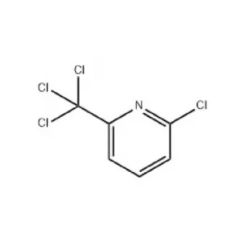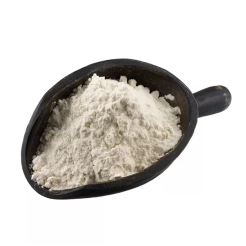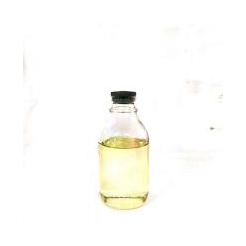Bis (Trichloromethyl) Carbonate
We supply BOC In Chemistry, which include BIS Carbonate C3Cl6O3 (Triphosgene)CAS NO:32315 10 9.Our products have high quality and competitive prices.
Product Description
BIS Carbonate(Triphosgene CAS:32315-10-9),also known as di(trichloromethyl)carbonate, is an organic compound with the chemical formula C3Cl6O3. This white crystalline powder decomposes slightly at the boiling point to produce trichloromethyl chloroformate and phosgene, mainly used in synthesizing chloroformate, isocyanate, and polycarbonate, chloride, etc.
Introduction
Triphosgene (bis(trichloromethyl) carbonate (BTC) is a chemical compound with the formula OC(OCCl3)2. It is used as a solid substitute for phosgene, which is a gas.Triphosgene is thermodynamically stable up to 200 °C. Triphosgene is used in a variety of halogenation reactions.Bis(trichloromethyl) carbonate (BTC, also known as triphosgene) was first described as early as 1880, and a patent using BTC was filed in 1900. Surprisingly, the compound remained almost unknown for the next 100 years

BTC was “re-discovered” in the last decades of the 20th century and is now the most commonly used phosgene substitute. (3a-3f) It is widely used in research, development, and industry, for example, for the production of active pharmaceutical ingredients (APIs) but also for agrochemicals, polymers, and fine chemicals on small-to-medium scales.
BIS Carbonate(Triphosgene CAS:32315-10-9)
|
Product Name: |
Triphosgene; Bis(trichloromethyl)carbonate; Triphosgen; triphosgene; bis(trichloromethyl) carbonate; carbonic acid bistrichlor methyl ester; bis-(trichloromethyl)-carbonat; methanol, trichloro-, carbonate (2:1); btc |
|
CAS: |
32315-10-9 |
|
MF: |
C3Cl6O3 |
|
MW: |
296.73 |
|
EINECS: |
250-986-3 |
|
Mol File: |
32315-10-9.mol |
|
InChI |
InChI=1 / C3Cl6O3 / c4-2(5,6)11-1(10) 12-3(7,8)9 |
|
Triphosgene Chemical Properties |
|
|
Melting point |
79-83 °C (lit.) |
|
Density |
1.898g/cm3 |
|
Boiling point |
204.5°C at 760 mmHg |
|
density |
1.78 |
|
vapor pressure |
16 hPa (90 °C) |
|
flashing point |
53.3 |
|
Vapor pressure |
0.263mmHg at 25°C |
|
Refractive index |
1.532 |
|
storage temp. |
2-8°C |
|
form |
Crystalline Powder, Crystals and/or Chunks; White crystals |
|
color |
White to off-white |
|
Water solubility |
practically insoluble |
|
Sensitive |
Moisture Sensitive |
|
BRN |
1787583 |
|
InChIKey |
UCPYLLCMEDAXFR-UHFFFAOYSA-N |
|
CAS DataBase Reference |
32315-10-9(CAS DataBase Reference) |
|
EPA Substance Registry System |
Methanol, trichloro-, carbonate (2:1) (32315-10-9) |
BIS Carbonate(Triphosgene CAS:32315-10-9), also known as di(trichloromethyl)carbonate, is an organic compound with the chemical formula C3Cl6O3. This white crystalline powder decomposes slightly at the boiling point to produce trichloromethyl chloroformate and phosgene, mainly used in synthesizing chloroformate, isocyanate, and polycarbonate, chloride, etc. It is widely used as an intermediate in plastics, pharmaceuticals, herbicides, and pesticides.
As a professional Boc Sciences, Pharmaceutical Raw Material Supplier, Boze can provide a wide range of intermediate raw materials, contact now.
Advantages
● High purity >99%
● Stable supply capability: 1000tons/Year
● Standard packaging and storage
● Warranty: if there are quality problems, we can negotiate a refund or exchange
Main Functions/ Application
● BZ chemicals Bis(trichloromethyl)carbonate/Triphosgene/ CAS 32315-10-9 is widely used as an intermediate in the field of medicine, pesticide, dyestuff, organic synthesis, high molecular material and etc.It is used in synthesizing chloroformate, isocyanate, polycarbonate, and chloride. Solid phosgene, also known as triphosgene, is synthesized from dimethyl carbonate - a green chemical material, which is highly reactive and can replace phosgene in various chemical reactions, and the main types of responses it can be involved in are chloromethylation, carbonic acid esterification, relation, isocyanate esterification, chlorination, isonitriles, ring-forming reactions, alpha-chlorination of aldehydes Formylation, oxidation of alcohols, etc.
● In organic synthesis, solid phosgene can replace oxalyl chloride as an activator of dimethyl sulfoxide in the oxidation reaction of alcohols and be used conveniently and safely in the preparation of hydroxyl compounds; solid phosgene can also change different types of alcohols into the corresponding chlorinated compounds. In the pharmaceutical industry, solid phosgene can replace phosgene in the synthesis of a large number of pharmaceuticals.
● BIS Carbonate(Triphosgene CAS:32315-10-9) Application:
The popularity of BTC is directly related to its physical properties, that is, its solid form, its low tendency to evaporate (vapor pressure at ambient temperature appr. 0.4 mbar), and commercial availability. In addition, BTC is currently not as tightly regulated as phosgene, and its reputation is, without well-founded reasons, much better than that of phosgene. Because of the stability of BTC at ambient temperature and its solid-state handling, the transportation, storage, handling, and processing of BTC appear to be more convenient than for phosgene. On small and medium scales (laboratories and pilot plants), BTC provides substantial operational convenience because exact amounts can be weighed easily. Furthermore, no facilities for carbon monoxide or chlorine (or phosgene cylinder) handling are necessary. This ease of handling helps pharmaceutical and fine chemicals producers perform “phosgenations” in pilot plants and kilo laboratories, which are normally not adequately equipped to use phosgene directly.
Because of the setup of these facilities, phosgene is normally replaced with BTC or another phosgene substitute/equivalent during the process research and development phases.
For various reasons, including commercial aspects, suppliers and most published literature brand BTC as “safe phosgene”, or “safer phosgene,” or “green phosgene.” The branding as “safe phosgene” is particularly misleading. New research results clearly show that BTC is at least as dangerous as phosgene. Its toxicity is only partly related to phosgene, which is released as a byproduct in the off-gas phases during reactions; BTC has a distinctive toxicity profile that differs substantially from that of phosgene.
Although BTC is a solid, it has a low but significant vapor pressure and sublimes. At room temperature, the BTC concentration of a saturated atmosphere is 4.2 g/m3, approximately 100 times higher than the LC50 value for rats (41.5 mg/m3),Ubichem reports an even higher value (11.6 g/m3) for the calculated BTC concentration in a saturated atmosphere.
Bis(trichloromethyl) carbonate was used in the preparation of Fmoc-amino acid chlorides. It was also used in the preparation of aryl-(Z)-vinyl chlorides.
Safety Instructions:
● S9: Keep the container in a well-ventilated place.
● S26: In case of eye contact, flush immediately with plenty of water and get medical attention.
● S45: In case of accident or discomfort, seek medical help immediately (preferably with the product container label).
● S36/37/39: Wear appropriate protective clothing and gloves and wear protective glasses or face shields.
● Hazardous Material Marking: T+: Very Highly Toxic Substance
● Hazardous Category Code: R26: Extremely toxic by inhalation.
● R29: Releasing toxic gas when in contact with water.
● R34: Can cause burns.
Export Market(Overseas Market)
Main markets
● North America includes the United States, Canada, and Mexico
● Europe includes Belgium, Germany, France, UK, Italy, Spain
● South America includes Colombia, Argentina, Brazil, and Chile
● The Asia Pacific includes Japan, China, Korea, India, Saudi Arabia, and Southeast Asia
What exhibitions have we participated
● API 2017 2018 2019 2022 online, China,Germany, Japan
Sources of BTC and Quality
Most BTC is produced via photochlorination of dimethyl carbonate in China ; few BTC producers operate outside of China, and these products usually manufacture BTC for internal use only. Currently, more than 500 T/y of this material is exported to India.
FAQ
Our service
● Our Policy "We care quality, we care life"
● Delivery: By air or sea (DHL, UPS, FeDex, TNT...)
● Warranty information: if there are quality problems, we can negotiate a refund or exchange
Payment method
● TT/ LC/Paypal, Western Union...
BIS Carbonate(Triphosgene CAS:32315-10-9) Packing
In 25kgs or 30kgs net plastic drum, or steel drum, according to customer’s requests.

BIS Carbonate(Triphosgene CAS:32315-10-9) Transport

BIS Carbonate(Triphosgene CAS:32315-10-9) Storage
Keep tightly closed. Store in a dry, cool and well-ventilated place.

Other Notes
Crystalline, easy-to-handle substitute for phosgene; 1 mole of the reagent corresponds in its reactivity to 3 moles phosgene.Handling, The reagent is somewhat moisture sensitive, but scrupulously anhydrous conditions are not necessary. Rapid handling of the reagent in open air, in the absence of a glove bag or dry box, is usually satisfactory. This reagent should only be handled in a fume hood. Triphosgene should be handled with exactly the same precautions as the more dangerous phosgene, although the reagent is considered much safer due to its lower vapor pressure and higher stability.
We supply BOC In Chemistry, which include BIS Carbonate C3Cl6O3 (Triphosgene)CAS NO:32315 10 9.Our products have high quality and competitive prices.if you want to konw more information,please click on the "WANT TO KNOW MORE INFOR" button.We will give you a professional answer for your question.
Related Products:
Boc in Organic Synthesis Processes
BOC L glutamic Acid Methyl Ester




